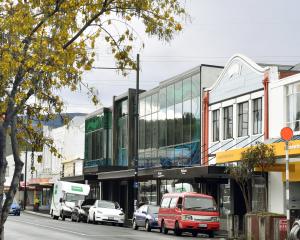
It appears the newly-elected coalition Government has taken a more hands-on approach to boost the industry.
But it needs to take one step at a time.
Early policy suggestions did cause some angst, principally among forest owners. Forestry is long-term. Very long-term. In fact, 25 to 30 years.
Nothing can be rushed. Consultation with leading industry players and the Labour-led NZ First and Greens Government is vital.
And this could be coming to fruition.
Forest owners, processors and contractors canvassed by this forestry writer and consultant in Otago and Southland for the ODT have given positive responses, even some considered to be to the right of the political spectrum.
A positive most talked about was the placing of new Forestry Minister Shane Jones high on the caucus benches.
Described as a straight shooter, he has been in continuous contact with industry players to get down to the nitty-gritty.
One unintended consequence was talk of embargoing log exports to boost local processing plants. Why export round logs when you can get nearly twice the volume in cut board lumber, many Dunedin city dwellers may ask when they witness lines of logging trucks heading to the ports.
It’s an indication of the divide between urbanites and those working in the bush. The problem is that the major exporters list up to 14 grades of log depending on form, length and size.
Local mills much prefer the higher-grade denser timber, only about five or six of the listed grades.
So what happens to the rest of graded logs if they cannot be exported? Left on the skid site for firewood or chip?
These grades are fetching good prices. OK if a chip mill or fibreboard plant is within close proximity.
It is hoped Mr Jones can put this issue to rest.
Another suggestion is that the Administration could look to supporting value-added processing, such as Pan Pac’s new mill at Milburn, near Milton, and the refurbished Stillwater mill on the West Coast, geared to produce appearance-grade products, or processors producing laminated beams.
Both Wenita Forest Products’ David Cormack and City Forests’ Grant Dobson see positives in policy implementation, but with some reservations.
It will depend on the outcomes of consultations, that the Government is not stampeded into decisions it may regret.
The devil is in the detail. The longer it takes to get to some hard decisions the better it is for the industry. I, with most forest owners, believe it was a good move to establish a minister for forestry, and reshape thinking in the Ministry for Primary Industries. And Shane Jones was the man for the job.
The issue of planting a billion more trees had been somewhat overblown by the media. Silviculturist Steven Johnson, of Johnson Forestry, explains nearly half this number was due to be planted anyway. Most corporate forests were Forestry Stewardship Council (FSC) certified, meaning they were committed to replant after harvesting. Who is planting the new areas and where is an issue. Mr Johnson is planning to increase his planting crews for the following season from about 35-40 employees to up to 60.
If planting is solely for commercial reasons, City Forests advises landowners need to look at proximity to markets, wharf and mills, climatic conditions and contour. Also, annual income compared with other agricultural products needs to be considered, and land can be expensive.
Don Carson, communications manager for the NZ Forest Owners Association in Wellington, emailed that the lion’s share of Mr Jones’ billion trees, 100,000ha planted per year, will be commercial species (1000 seedlings p/ha).
‘‘These absorb carbon at the fastest rate, deliver the jobs, and provide financial returns to landowners.
‘‘Half of the 100,000ha will come from replanting trees currently in the ground.
‘‘In the past 12 years more than 100,000ha has been lost from the plantation estate in New Zealand, significantly making it more difficult for NZ to meet its climate change mitigation targets.
‘‘The Government’s efforts will be likely focused on working with those who had land suitable for new trees — Maori, farmers and local and central government itself.
‘‘Re-establishing the Forest Service will play a key part in reaching the billion-tree target by 2028 with possible functions including brokering deals between investors and landowners, management advice, and assisting with woodlot common management.
‘‘Preserving confidence in forest management means the Government will need to tread carefully with two other issues — foreign investment and log exports. A wood encouragement policy for government building decisions would be timely. The advent of new high-rise wood technology, such as cross-laminated lumber, means we have an opportunity to start using more of those logs on the wharf that until now we have not had a domestic use for,’’ Mr Carson concluded.
Mr Carson says he and the FOA have had constant consultations with Shane Jones.
Commenting on these figures so far, John Ellegard, editor of NZ Logger magazine, estimates that by the time nurseries catch up with new plantings, establishment of alternative vegetation such as manuka for honey production, afforestation of denuded hill country and other uses such as emission control, it would be 20-plus years before planning could be implemented. It would mean only 10,000ha extra by that time, involving only a few extra logging contractors to handle the increase.









